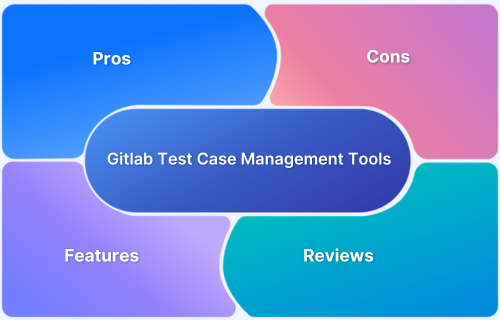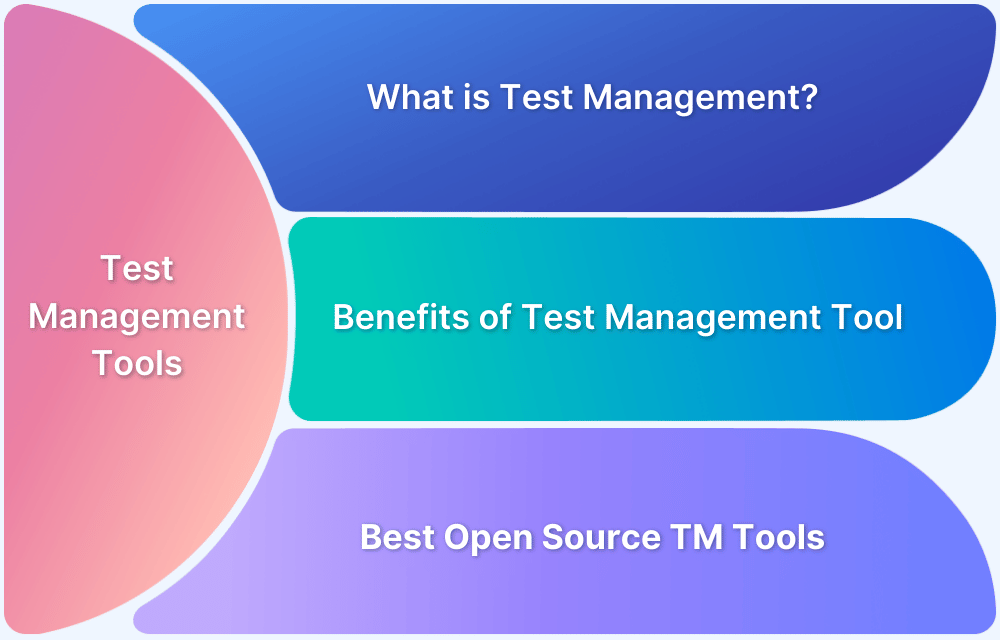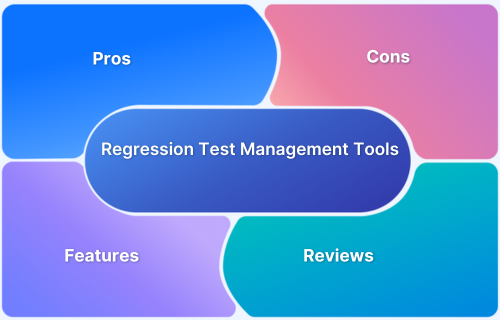Automated test case management tools are essential for modern software development, enabling teams to efficiently manage, track, and execute tests in an automated environment. These tools streamline the testing process, integrate with CI/CD pipelines, and provide real-time feedback to accelerate software delivery.
Overview
Top Automated Test Management Tools in 2025
- BrowserStack Test Management: AI-powered, unified automation and manual test platform.
- Kualitee: Flexible defect and test management with strong analytics.
- Testmo: Unified manual, exploratory, and automated testing with deep reporting.
- TestRail: Structured, scalable test repo with rich reporting and integrations.
- Zephyr for Jira: Native Jira integration for test planning and automation sync.
- PractiTest: End-to-end traceability with intuitive dashboards and integrations.
- TestCollab: Simple collaborative test management with agile integration.
- Xray for Jira: Jira-native automated/manual test management and traceability.
- QAComplete: Custom workflows supporting manual and automated test cycles.
- SmartBear Test Management: Enterprise-scalable platform for manual/automated tests.
This article explores the top tools available, key benefits, and how they help DevOps teams achieve continuous testing and seamless collaboration.
What are Automated Test Case Management Tools?
Automated test case management tools are specialized software solutions designed to automate the creation, execution, and tracking of test cases throughout the software development lifecycle.
These tools provide centralized management for test cases, defects, and test execution, integrating seamlessly with CI/CD pipelines to ensure continuous testing.
They allow teams to:
- Automate repetitive test cases (such as regression tests)
- Execute tests across multiple environments simultaneously
- Provide detailed reporting and real-time feedback
- Ensure that tests are aligned with development goals
- Improve collaboration among development, testing, and operations teams
Key Benefits of Automated Test Case Management Tools
Automated test case management tools offer several key benefits that enhance the overall efficiency and effectiveness of the testing process:
- Speed and Efficiency: Automation reduces manual effort, enabling faster and more frequent test execution, allowing teams to focus on critical tasks.
- Improved Accuracy: These tools minimize human errors, ensuring consistent and reliable test results that improve software quality.
- Seamless Integration with CI/CD: Automated tools integrate with CI/CD pipelines, running tests automatically with each code change to prevent defects in production.
- Better Test Coverage: Automation enables higher test volumes, covering more scenarios and edge cases that manual testing might miss.
- Real-Time Feedback: Automated tests provide immediate feedback, helping teams detect issues early and accelerate decision-making.
- Scalability: These tools can scale to handle growing projects, executing tests across multiple platforms and environments simultaneously without sacrificing speed.
Top Automated Test Case Management Tools in 2025
In 2025, the leading automated test case management tools integrate seamlessly with CI/CD pipelines, enabling faster test execution and real-time feedback.
These tools enhance test coverage, improve efficiency, and ensure high-quality software delivery across teams.
1. BrowserStack Test Management
BrowserStack Test Management is an AI-powered, unified platform designed to accelerate test case creation, execution, and automation with up to 90% faster test authoring and 50% improved coverage.
It offers seamless integrations, real-time visibility through customizable dashboards, and advanced AI agents that streamline testing workflows for both manual and automated tests.
Built for teams of all sizes, it ensures secure data handling while enabling high-quality, efficient software delivery.
Key Features of BrowserStack Test Management:
- AI-Powered Test Case Creation: Automatically generate comprehensive test cases from Product Requirement Documents (PRDs), user stories, or text prompts. AI also suggests enhancements to existing test cases, reducing manual effort significantly.
- Streamlined Manual and Automated Test Runs: Plan and execute test runs across manual and automated tests. Supports dynamic test inclusion and uploading automation results from frameworks like JUnit and BDD-JSON.
- Unified Test Management: Manage all manual and automated test cases in one centralized platform with full traceability from requirements to defects through seamless integrations with Jira, Azure DevOps, and more.
- Powerful Dashboard Analytics: Access customizable dashboards that offer real-time insights, track release status, monitor historical trends, and visualize testing metrics, including automation coverage.
- Test Deduplication Agent: Detects exact or semantically similar test cases across your repository, providing intelligent recommendations for merging or removal to maintain a clean and efficient test suite.
- Low-Code Automated Test Authoring: Quickly convert manual test cases into low-code automated tests to accelerate automation adoption without requiring deep coding skills.
- Intelligent Test Selection Agent: Uses AI to identify and recommend the most relevant tests for execution, optimizing test runs and focusing on critical test coverage.
- AI-Powered Jira App with Two-Way Binding: Synchronize test cases and runs between BrowserStack Test Management and Jira, allowing management from both platforms with AI-driven assistance.
- Support for 50+ Automation Frameworks & CI/CD Tools: Integrates with popular frameworks (Appium, Playwright, TestNG, etc.) and CI/CD platforms (Jenkins, Azure Pipelines, Bamboo), enabling scalable test automation workflows.
The free version of BrowserStack Test Management offers unlimited test cases, robust integrations, and real-time reporting capabilities.
Try BrowserStack Test Management
2. Kualitee
Kualitee is a flexible cloud or on-premise test management tool focusing on defect tracking and real-time dashboards. It integrates with popular development and automation tools to support continuous delivery pipelines.
Key Features:
- It provides comprehensive test and defect management capabilities in a single interface.
- Requirements are linked directly to tests for traceability.
- Real-time dashboards give visibility into testing progress and quality metrics.
- API support enables triggering automation within external CI/CD environments.
Pros:
- User-friendly interface with free and premium plan options.
- Supports both cloud and on-premises deployments.
Cons:
- API capabilities are limited for complex integrations.
- Manual setup is needed for some third-party integrations.
Also Read: 17 Best Test Management Tools For Jira
3. Testmo
Testmo unifies manual, exploratory, and automated testing workflows into one scalable platform supporting Agile and DevOps teams. It emphasizes collaboration and provides deep reporting capabilities.
Key Features:
- The platform manages test cases, exploratory sessions, and automated tests under one roof.
- Powerful dashboards provide live metrics and actionable insights.
- Testmo integrates with Jira and various popular CI/CD tools for automation support.
- Workflow customization enables fitting diverse team methodologies.
Pros:
- All-in-one solution adaptable to various testing needs.
- Collaboration features enhance team productivity.
Cons:
- Advanced automation features are still growing.
- Initial learning curve for complex configurations.
4. TestRail
TestRail is a structured and scalable test management tool widely used for manual and exploratory testing with strong reporting and integration capabilities.
Key Features:
- It provides a centralized repository for organizing test cases with comprehensive foldering.
- Detailed reporting and customizable dashboards offer actionable team insights.
- Native integrations with Jira and major automation frameworks enhance continuous testing.
- Permission controls and reusable test steps provide organization-wide flexibility.
Pros:
- Rich reporting abilities and workflow flexibility.
- Broad ecosystem integrations for CI/CD.
Cons:
- Does not natively offer AI-driven test creation.
- Licensing and scaling costs can be high.
5. Zephyr for Jira
Zephyr for Jira delivers test case management completely embedded within Jira, simplifying Agile test execution and reporting.
Key Features:
- Test authoring, planning, and execution are native Jira activities.
- Real-time dashboards display automation results and testing metrics.
- It supports requirements mapping and coverage analysis.
- REST API and CI/CD hooks provide automation pipeline integration.
Pros:
- Seamless Jira user experience without switching platforms.
- Real-time coverage and detailed reporting for Agile teams.
Cons:
- Features vary with Jira hosting plans.
- Performance may degrade with very large Jira instances.
Must Read: Zephyr Alternatives for Test Management
6. PractiTest
PractiTest offers an end-to-end SaaS platform with strong traceability, customizable dashboards, and built-in issue and requirement management.
Key Features:
- Links requirements, tests, and defects for full traceability.
- Real-time dashboards visualize testing and release metrics.
- It integrates easily with popular automation tools.
- Supports hierarchical test organization to manage complex projects.
Pros:
- Intuitive interface with strong compliance support.
- Excellent traceability for audits and regulations.
Cons:
- Setup and customization require technical effort.
- Advanced niche testing capabilities are limited.
Learn More:Top 11 Regression Test Management Tools
7. TestCollab
TestCollab is a simple, collaborative test management tool with integrations and customizable workflows catering to Agile and distributed teams.
Key Features:
- Enables hierarchical test planning and execution tracking.
- Integrates with Jira, Slack, and CI tools for seamless workflows.
- Offers REST API access for automation triggers.
- Visual analytics help teams monitor testing progress.
Pros:
- Quick onboarding with user-friendly interface.
- Effective tools for distributed team collaboration.
Cons:
- Automation integrations are limited compared to others.
- Reporting customization options are basic.
8. Xray for Jira
Xray is a native Jira test management app supporting both manual and automated test management with deep traceability.
Key Features:
- Enables test case management as Jira issue types.
- Maps requirements, tests, and defects within Jira.
- Provides automated and manual test execution workflows.
- Offers REST API and CI/CD pipeline integration.
Pros:
- Full integration with Jira ecosystem and Agile workflows.
- Strong reporting and coverage visualization.
Cons:
- Performance and feature depth depend on Jira hosting environment.
- Complex configuration for large-scale projects.
Must Read:Xray Alternatives for Test Management
9. QAComplete
QAComplete is a versatile test management platform offering customizable workflows, hybrid test support, and deep integration options.
Key Features:
- Allows creation of custom test suites and folder structures.
- Supports manual and automated test executions.
- Links defects and requirements natively within the platform.
- Provides comprehensive dashboards for insights.
Pros:
- Highly customizable for tailored workflows.
- Broad support for CI and automation tools.
Cons:
- User interface feels outdated to some users.
- On-premise setups can be complex.
10. SmartBear Test Management
SmartBear provides scalable test management for enterprises with advanced scheduling, analytics, and CI/CD integration.
Key Features:
- Centralizes management of manual and automated tests.
- Offers advanced test scheduling and tracking capabilities.
- Provides live analytics and customizable reporting dashboards.
- Integrates with major CI/CD and automation frameworks.
Pros:
- Enterprise-grade scalability and broad integrations.
- Strong support for complex test environments.
Cons:
- Premium cost structure.
- Requires significant initial configuration.
How to Choose the Right Automated Test Case Management Tool?
Choosing the right automated test case management tool requires evaluating key factors that align with your team’s needs, workflows, and objectives. Here’s how you can make an informed decision:
- Integration Capabilities: Ensure the tool integrates seamlessly with your existing CI/CD pipeline and other development tools like Jira, GitLab, or Jenkins for smooth workflow automation.
- Test Automation Support: Check if the tool supports the automation frameworks you use, such as Selenium, Cypress, or Appium, for running tests automatically.
- Scalability: Look for a tool that can grow with your project and accommodate increasing test case volumes, platforms, and devices as your team scales.
- Ease of Use: Consider the tool’s user interface and ease of adoption for your team. A simple, intuitive interface will save time during onboarding and reduce the learning curve.
- Reporting and Analytics: The tool should offer detailed and real-time test reports and analytics, providing clear insights into test results and helping you quickly identify issues.
- Collaboration Features: Ensure the tool promotes collaboration across development, QA, and operations teams, enabling real-time updates and shared dashboards.
- Cost and Support: Evaluate the tool’s pricing model and available support options. Consider long-term costs and the availability of customer support, documentation, and training resources.
Difference Between Automated and Manual Test Case Management Tools
Here is a quick overview of the key differences between automated and manual test case management tools:
| Aspect | Automated Test Case Management Tools | Manual Test Case Management Tools |
| Test Execution | Executes tests automatically within CI/CD pipelines. | Requires manual execution by testers. |
| Speed | Fast and efficient, reducing test cycle times. | Slower due to manual intervention at each step. |
| Scalability | Easily scales for large, complex test cases and projects. | Becomes difficult to scale as test cases grow. |
| Error Reduction | Minimizes human errors and ensures consistent results. | Prone to human errors during test execution. |
| Feedback Time | Provides real-time feedback on test results. | Feedback is slower due to manual reporting and tracking. |
| Test Coverage | Allows running of a higher volume of tests across multiple platforms. | Limited test coverage due to resource constraints. |
| Collaboration | Facilitates collaboration through shared dashboards and real-time updates. | Collaboration is slower as updates are not in real time. |
| Cost | Typically higher upfront cost but saves in the long term with automation. | Lower upfront cost, but more resources are required for manual testing. |
Best Practices for Using Automated Test Case Management Tools
To maximize the effectiveness of automated test case management tools, follow these best practices:
- Align Automation with DevOps Goals: Integrate your test management tool with your CI/CD pipeline to automate testing at every stage, ensuring faster and more consistent results.
- Automate Regression and Smoke Tests First: Start by automating high-priority tests like regression and smoke tests, which are run frequently and have repetitive execution cycles.
- Ensure Robust Reporting and Analytics: Use detailed reporting and analytics features to track test results, identify patterns, and make data-driven decisions for continuous improvement.
- Maintain Test Case Quality: Regularly review and update test cases to ensure they remain relevant and effective, avoiding bloated or outdated tests.
- Collaborate Across Teams: Foster collaboration between developers, testers, and operations teams by utilizing shared dashboards and real-time updates, improving efficiency and communication.
- Monitor Test Coverage: Continuously monitor test coverage to ensure critical areas are being tested. Utilize the tool’s analytics to identify any gaps in testing and improve coverage.
- Regularly Evaluate Tool Performance: Periodically assess the performance of your test management tool, ensuring it continues to meet the needs of your growing team and project complexity.
Conclusion
Automated test case management tools are essential for DevOps teams aiming to enhance efficiency, speed, and collaboration in their testing processes. By integrating with CI/CD pipelines, automating repetitive tasks, and providing real-time feedback, these tools help teams maintain high-quality software delivery.
Choosing the right tool, following best practices, and staying ahead of emerging trends will ensure your team can scale testing efforts and achieve continuous improvement.








